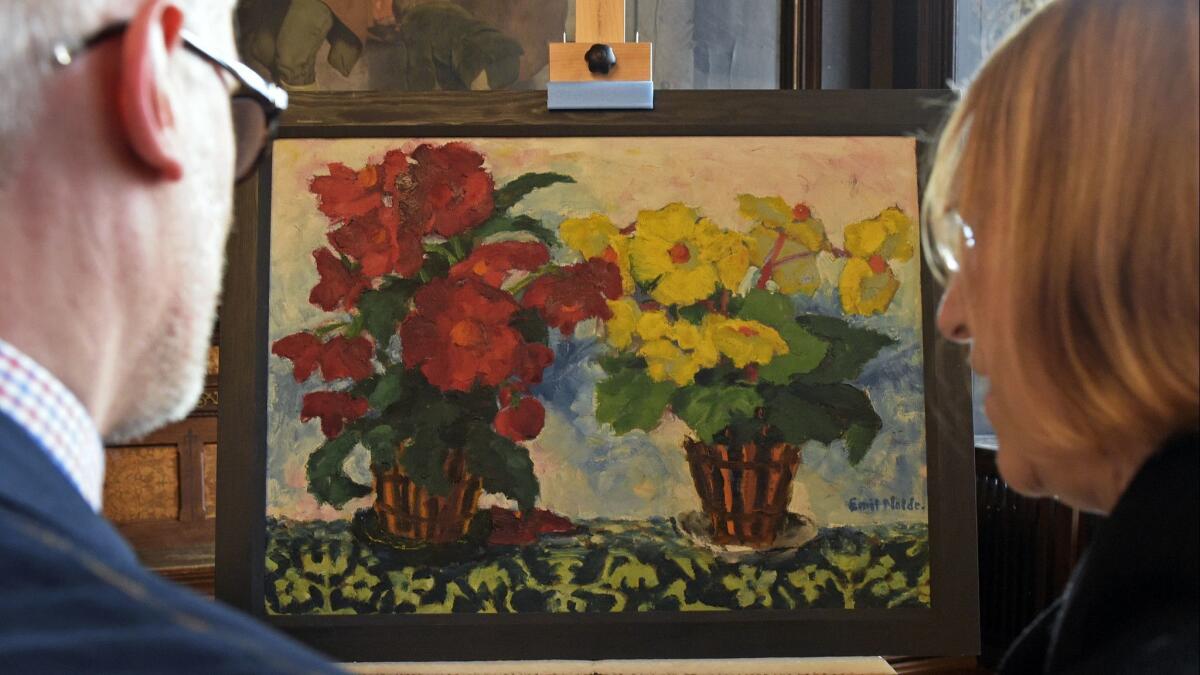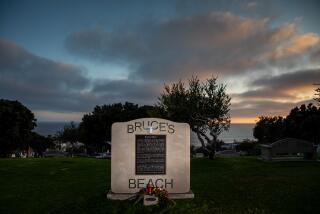Editorial: Who has the right to Nazi-looted art

The looting of art by the Nazis during World War II was, arguably, the greatest cultural theft of all time. Seven decades later, Holocaust survivors and their descendants are still looking for paintings and other works that were taken as they fled Europe.
Some experts estimate that 600,000 pieces of art were stolen; others say it’s much higher. About 100,000 works remain missing. Most were stolen from Jewish owners — ripped off the walls of their homes and galleries, sold by their owners under duress for a fraction of their true value or bartered for safe passage out of the country.
Today, the search continues for the missing works. But even when a looted work of art is located all these years later, a new battle may begin over who deserves to own it.
What if a private owner does, for one reason or another, possess stolen art that he or she honestly didn’t know was stolen?
Last week, the two-decades-long quest by the descendants of Lilly Cassirer to reclaim the Camille Pissarro painting she was forced to surrender in return for an exit visa from Berlin in 1939 landed in a federal court here in Los Angeles.
No one disputes that the Pissarro masterpiece depicting a rainy Paris streetscape — “Rue Saint-Honore, Apres Midi, Effet de Pluie” — once hung in Cassirer’s parlor. But her relatives and their lawyer, David Boies, contend that the Thyssen-Bornemisza Museum in Madrid, where the Impressionist painting now hangs, knew that it was Nazi-looted art when it was bought from the museum’s namesake, Baron Hans Heinrich Thyssen-Bornemisza, who has since died. Boies, who represents Cassirer’s surviving great-grandson, David Cassirer, argues that the baron, a major collector, was shamelessly, willfully aware that the painting was Nazi-looted art.
The museum, for its part, disputes that, saying everyone acted in good faith. U.S. District Court Judge John F. Walter will rule, probably next spring, on who is the rightful owner of the painting, valued at $30 million or perhaps more.
In that particular case, the evidence is pretty persuasive that the purchasers of the painting did not do their due diligence. It seems likely (based on evidence, including markings on the back of the painting) that they knew it was looted — or suspected that it was and chose not to investigate. That should simplify matters for the judge.
But in some other cases, it is not clear at all whether the purchasers were aware of the dubious provenance of the art they bought.
Nevertheless, the moral bottom line should be obvious: People whose art was stolen from them by the Nazis in wartime Europe should get it back or be justly compensated for it. As Stuart Eizenstat, a State Department advisor on Holocaust-era issues, said at a conference last month: No museum, art gallery, collector, auction house or private owner “should want to hold or deal in Nazi-looted artworks.”
Museums, particularly here in the U.S., have made a good start of going through their collections to identify suspect work that circulated in the Nazi era, but experts say they should be doing more research on the provenance of their collections. There are more and more online databases of lost or suspect art available for search, but those databases need to be made easier to access.
There has been some backsliding. The Netherlands, which had a good track record of making restitution for stolen art in its museums, now uses a balancing test when a claim is made: Does the importance of the piece to the museum outweigh the emotional attachment of the person making a claim? That’s an absurd and unjust standard.
It’s the responsibility of all museums, art galleries, auction houses and collectors to establish provenance before they purchase a work, and to take steps to determine whether the work they hold could have been stolen. Let the buyer beware.
Even museums that bought stolen art in good faith should return works to owners. That is no doubt a difficult decision for them to make — and possibly a costly one — but it is part of doing business today as a museum, as it should be.
Enter the Fray: First takes on the news of the minute from L.A. Times Opinion »
Leading auction houses, to their credit, have strict rules for investigating the provenance of works of art that could conceivably have been looted in the Nazi era and, of course, a total ban on selling any that were. According to the international director of restitution at Christie’s, which makes its guidelines public, the auction house has successfully resolved close to 200 claims involving disputed artworks over the last 20 years.
Nor will any reputable dealer sell looted art.
Private collectors, like museums, are responsible for researching and understanding the provenance of the art they buy. But what if a private owner does, for one reason or another, possess stolen art that he or she honestly didn’t know was stolen? In some cases, they have voluntarily returned the art to the victim. In others, compromises have been reached; sometimes the current owner will sell the work and split the proceeds with the rightful owner — as has happened at Christie’s. That can be okay, if both sides agree; it can avoid a costly and time-consuming lawsuit. Every case is different. Some private collectors have the resources to withstand the financial loss of a valuable artwork; others don’t.
There’s nothing simple about restitution for victims of the Holocaust. But not dealing with restitution by offering convenient excuses — it’s decades since it was acquired, the owners didn’t think it was stolen, it’s too valuable to part with — only compounds the immorality of the original theft.
Follow the Opinion section on Twitter @latimesopinion or Facebook
More to Read
A cure for the common opinion
Get thought-provoking perspectives with our weekly newsletter.
You may occasionally receive promotional content from the Los Angeles Times.









